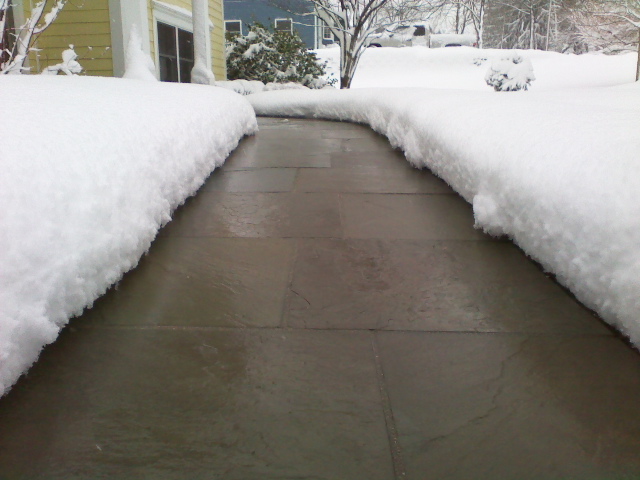
Considering Snow& Ice Melting Technology
If you are looking for an easy way to clear driveways, walkways, stairs and other critical access areas quickly and efficiently after a snowfall, perhaps you might consider installing a snow and ice melting system. Although it may seem like a new technology, snow melting systems have actually been around for about 30 years, and have been used in commercial and residential applications for more than half a century.
Safety First
One advantage of using a snow melting system is that concrete driveways and exterior surfaces stay safer. These systems also eliminate the time and labour of using a snow removal contractor to plow and shovel paved surfaces and other access areas. No corrosive de-icers or chemical applications are required thus preserving the life of the underlying pavement. And the snow melting system can be designed to shut off when the snow is cleared and the precipitation ends.
Knowing Snow
There are two common types of installations: hydronic, in which hot water or steam is circulated in pipes below pavement level or electric, where coils or cables generate heat to melt the falling precipitation. Both systems involve a series of coils or tubing that are built into a development’s driveways, walkways and steps, and controlled with a simple on/off manual switch. The systems can also be remote-controlled and programmed by temperature to automatically come on when snow and ice develop. Both rely on four key elements to turn the entire slab surface into a heat source:
- A heating element, which is embedded in the slab
- Sensors to detect outdoor air temperatures and moisture
- A power source
- A controller to tie in the heating element with the sensors and power source
These systems are designed based on the needs of the development and most companies will work with an architect or designer to decide what works best.
Safe Steps
Conductive concrete is doubly helpful with walkways and stairs, since it can eliminate snow and ice buildup as a storm intensifies and continues. No longer do association members or staff have to wait until a storm stops to clear paths. A board’s interest in safeguarding against slips and falls isn’t just out of concern for their residents’ well-being; if a snowy walkway or icy steps causes a serious injury, costly lawsuits could occur.




10 COMMENTS
Larry Weaver
September 28, 2018, 10:26 pm REPLYThanks for mentioning that an advantage of a snow melting system is that no corrosive de-icers or chemical applications are required. I have a co-worker who is very sensitive to chemical applications, so getting a method of ice melting that doesn’t require that would be perfect. Before we start getting snow, I’ll let my boss know about he advantages of getting a commercial ice melting heater.
Ice
January 28, 2019, 9:52 am REPLYThanks, always interesting to read you posts! Your results in combination with this article just published that points to climate models severally underestimating long term effects of climate change really should gives us strong motivation to act now and not later. Keep up the good work!
Thomas Peterson
June 10, 2019, 2:09 pm REPLYI like how you pointed out that a heating system can eliminate time and labor of using a plow and shovel. I’ve been looking at having a ramp heater installation to make it safer for my dad to make it up his wheelchair ramp in the winter months. I’d love to try it this coming winter and see how he likes it.
Eric
August 20, 2019, 9:14 am REPLYgreat and interesting blog about snow ice melting technology. thanks for sharing this with all
Tyler Johnson
September 13, 2019, 6:04 pm REPLYThat’s interesting that you could have a heating element installed in the concrete to melt snow. I hate shoveling snow in the mornings so that sounds nice. I’ll have to consider getting a paving company to install something like that if I decide to get a new driveway.